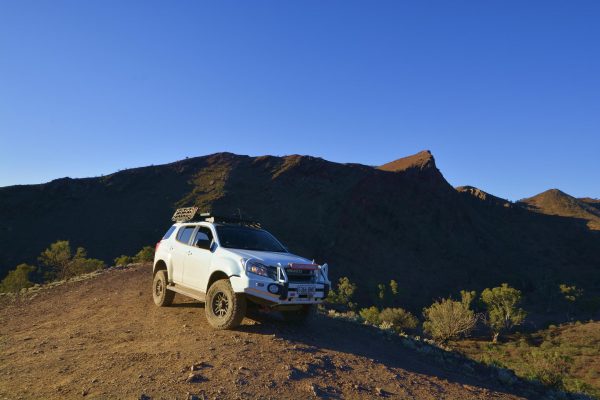
Those who like rocks go to the Flinders Ranges because the rocks that make those hills are some of the oldest you’ll find anywhere, in fact, billions of years worth. So important are the Flinders Ranges rocks that just a few months ago a new National Park was created called Nilpena Ediacara, taking its name from Nilpena Station, found off the Leigh Creek Road, wedged between the ranges and Lake Torrens.

Its import is that it hosts likely the world’s most important Ediacran era fossil reserves, ancient life compressed into the muds that were once part of the inland sea that covered early Australia. It’s a cause for celebration and saving a rich history for future generations. Whilst access to that site is restricted to limit visitation, you can see some of the same ancient lifeforms at nearby Alpana Station on a guided tour with Sally Henery.

Super-Sally drives a 200 series Land Cruiser across her property and her rocks, a two-hundred and six square kilometre chunk of the Flinders Ranges that has primarily been a pastoral lease for five generations of the Henery family.

Old Paddy Henery reckoned he could make a go of it back in 1878 with a much smaller parcel of fifty-three hectares (that’s a half of one square kilometre for comparison). He was an Irish immigrant at the age of twelve, thirty years earlier and was later drawn to the Flinders on the back of the copper boom in South Australia. Plenty know of the massive Moonta mine on the Yorke Peninsula and the Burra mine in the mid-north. Both were great money-spinners for the fledgling State, but exploration found resources worth investigating in the Flinders district as well.

There were the Nuccaleena, Yudnamutna and Bolla Bollana mines and the big one, the North Blinman mine, all carved out in the middle of nowhere with the evils of bringing the ore to market with primitive bullock and cart transport, running a red line through their profitability.

Paddy was a canny bloke because he left the hard yakka to those daft Welshmen who were at home underground picking out the ore, whilst he made a killing growing and selling fodder for the bullock teams freighting the ore south to Port Augusta for export. Until the train arrived in Parachilna, his commercially astute plan was enough to expand his property holdings to take on pastoralism as that was about to become the next big thing. You know the rest of the story about Australia riding on the sheep’s back…

Those rocks are now a major economic driver but for reasons that Paddy would have had zero grasp of and that is tourism and your and my interest in 4WD tourism.

The Blinman district landholders cottoned on to this idea twenty years ago and have carved out a healthy new income stream from folk wanting to get out and about and never more so than in these Covid times.

On a recent visit to the Flinders Sally took the Wilson family for a spin on their Alpana Station Experience trail and to those rocks. The rocks in question are called stromatolites.

We’d just returned from WA and a journey that took us up to a place called Hamelin Bay where you can see the living, breathing version alive and kicking. Sally’s have been buried for millennia and then reappeared as the Flinders district was ruptured and buckled, twisted to reveal secrets revered by geologists all over the world.

They are a pretty amazing thing as they were once the lungs of the planet, pumping oxygen into the air to create life and without them, we certainly wouldn’t have been here.

Sally’s experienced eye and her credentials in geology had a story all mapped out about the Flinders and the crucible of life for us in a fascinating hour that further reinforced how special this part of the world is and how you should visit it and explain it to your kids. Must-see, must-do.

Geology lesson done it was time to go rock-hopping and a self-drive pay-for-use trail beckoned called Mt Samuel with access via the Glass Gorge Road along the Parachilna Gorge, halfway between Blinman and Parachilna.

Once through the gated entrance to the trail (a $60/vehicle fee gets you a key to the padlock), and into the Valley Paddock it’s all low range as the track heads skywards through the ABC and Heysen Ranges. Before we got too far in though it was time for decompression for the tyres.
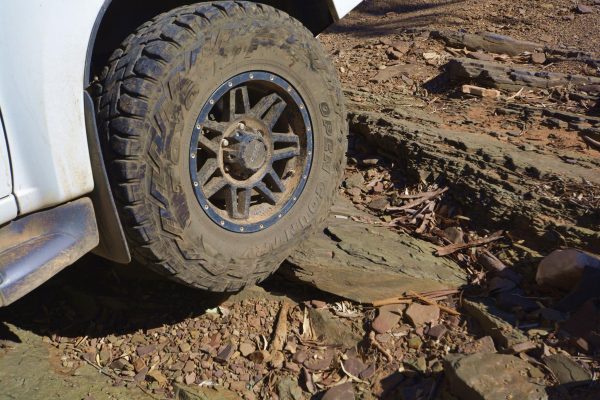
We opted to go straight down to 18psi/125kPa on all four to get some flex going in those sidewalls. It’s important for traction on the shale and quartzite steps that pepper the track and to prevent a nasty gash in a sidewall that might make the journey a little more expensive than the $60 entry fee suggests.

In typical Flinders Ranges steep country style, the ride is a rollicking one, up the hill and down dale, the track littered with loose gravels and fallen timber adjacent to the pathway requiring plenty of attention from the driver’s seat. Rose’s (my wife and accomplished 4WD driver extraordinaire) Isuzu MU-X was in its element having been a past participant in tackling the region’s tracks pretty much since she bought it.

It’s a 2016 model and very much changed for our style of touring with just about everything out of the ARB catalogue in the way of protection above and below the surface, with sturdy CSA Renegade wheels shod with Toyo R/Ts to get the motive power to the ground. You can read about it in Issue 3 of Loaded 4X4 Magazine. Missing a rear locking diff and having an ineffectual traction control system meant that on a few occasions we had to be a little cunning with our lines to avoid a dreaded cross-axle moment and no go.
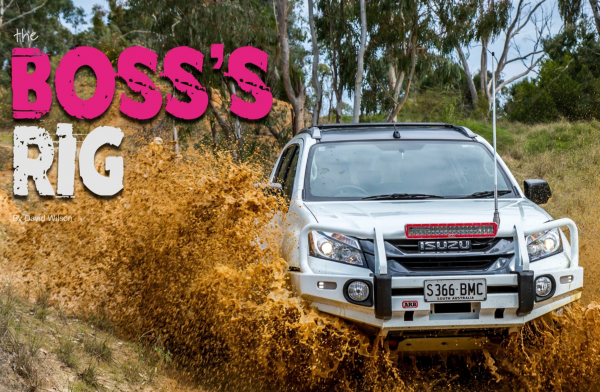
The track crisscrosses the usually dry creek beds that come down off the hills and in the first section of the trail and heading north, it’ll be the ones coming off the confused Mt Samuel and Mt Samuel Proper hills that flank the trail. Maybe old Paddy got on the giggle juice back in the day and muddled up the peaks, but the views from the adjacent crests are stunning looking south and down the length of the ABC and back towards Wilpena. Every now and again you get a glimpse west through the hills and on a clear day you’ll see a glinting Lake Torrens in the distance.

Coming off those hills and into the valley floor below and now heading west is where the real fun starts with the aptly named Mt Buggery Gorge. I remember quizzing Sally’s father-in-law, John Henery, a few years back about the choice of name for this section and he replied curtly “because David, it was a bugger of a track to create”.

Get into the gorge and you’ll see why, a mish-mash of tortured rock shelf twisted this way and that that’ll have your bash plates doing more than tinkle, your tow hitch doing some engraving and your sidesteps obliterated with imperfect lines. A spotter outside can reverse the carnage potential if your skills are a bit underdone.
Once out of buggery you’ll swing south and pick up the relative ease of the Green Well Creek and Green Valley section and here you’ll stumble upon a SA Government marker point or two that are essential photo reference points so our land managers can tell how well the country is going. Luckily in 2021 with some nice rains over the last eighteen months, the place is looking a whole lot lusher than the disaster of 2019. You can tell it’s good via the old litmus test of how green the spinifex is. Right now they’ve got a nice tinge.

Green Well Creek is an anabranch of the Parachilna Creek and gorge and eventually runs out where we started five hours earlier, the loop we’ve just driven being about twenty-odd kilometres in length. Speaks volumes about the terrain and the need for low range.

You might have noticed on the eastern side of Green Well Creek is a ramshackle beach “shack” just short of the creeks intersecting. It belonged to an old bloke called Tex Phelps, ex USA Navy, who visited the district many years ago and never left. He and his partner (probably helps she was a stonemason) building a humble abode from whatever materials they could lay their hands on.

Sadly, he passed in October 2018 and is fondly remembered in the district. By all means, have a look, but leave the place alone, because if you vandalise it, you’ll be looking over your shoulder forever. Blinman Karma they reckon is a bitch.
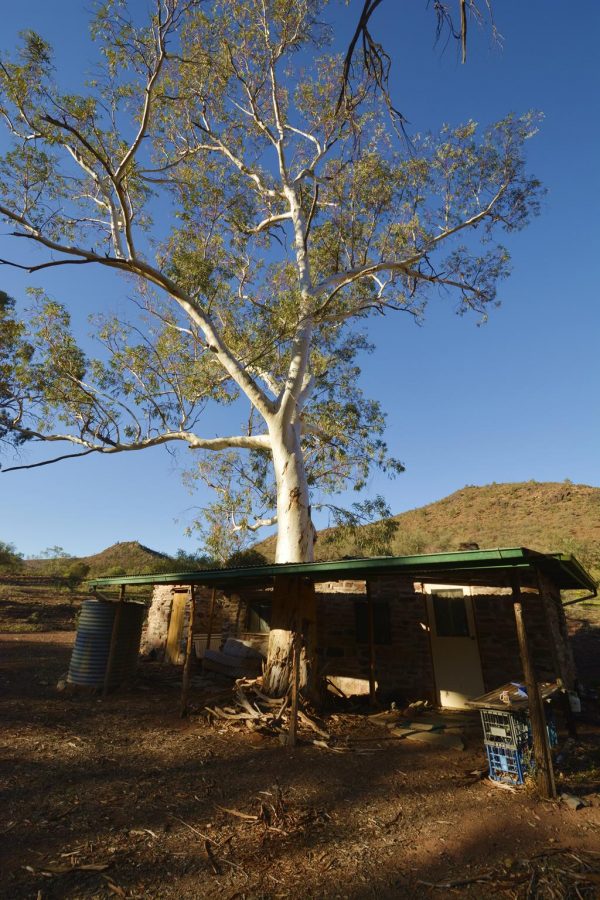
Alpana Station and the Mt Samuel track are a rich vein of the Flinders Ranges ripe for exploring and deserve your visit. Any 4WD with high clearance and a dual-range gearbox will have the ability, but leave the 20” wheel/tyre combo at home (and for that matter any 18” passenger car rubber) as anything with short sidewalls is unsuited to the terrain. Sally uses Toyo Open Country All-Terrains on her 200 series Land Cruiser because she reckons it’s the best light-truck rubber going. Sage advice.
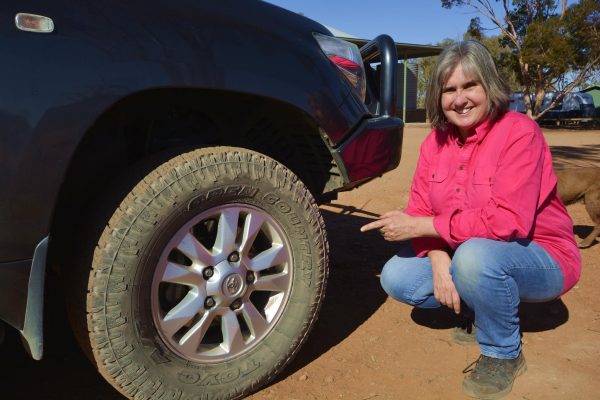
There’s accommodation on-site in the form of a beaut shearers quarters with seven rooms and a generous kitchen with good facilities, gas stoves, fridges and power from a community serviced diesel generator with enough grunt for lights but no AC. Caravanners are welcome with four powered sites with their own en-suite bathrooms and another four powered sites only in the Trees Campground.

You can contact Sally on the dog-and-bone on 08 8648 4626 and on the web at www.alpanastation.com





GIPHY App Key not set. Please check settings